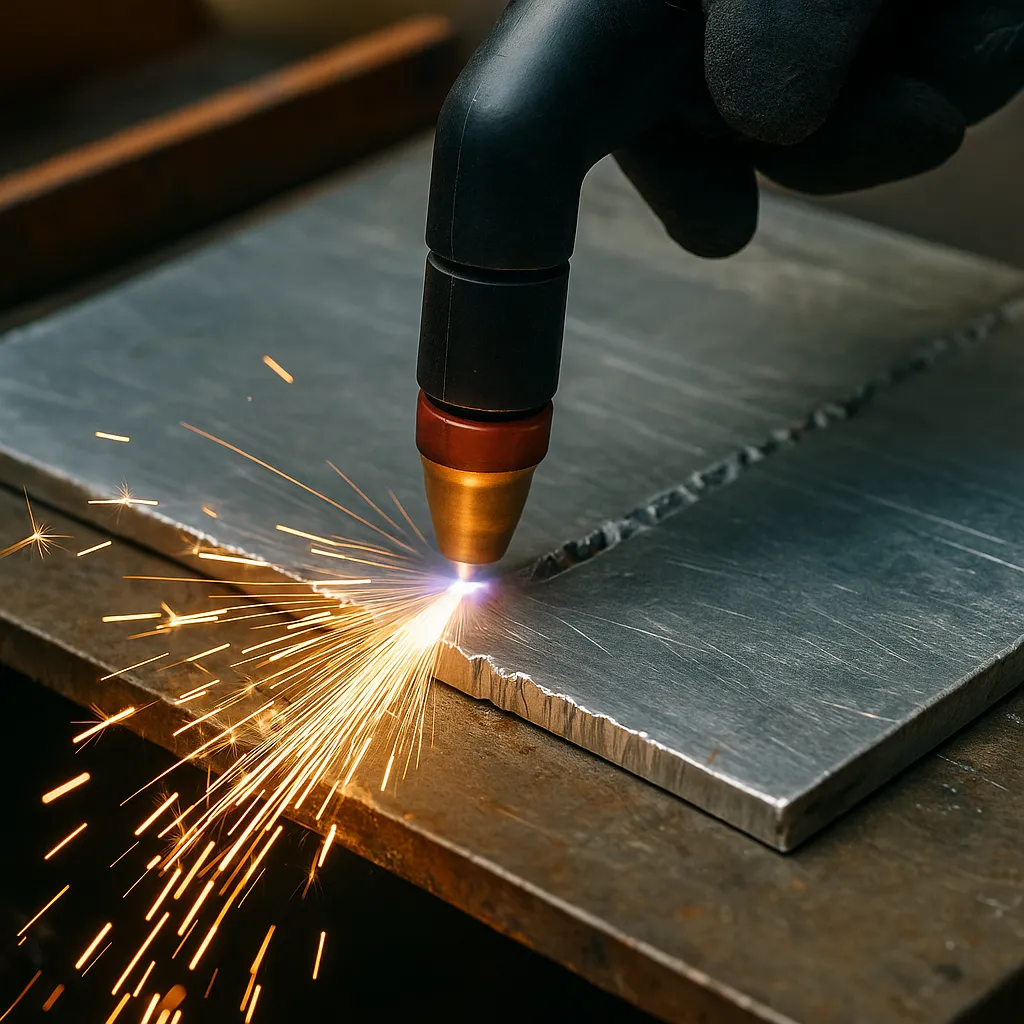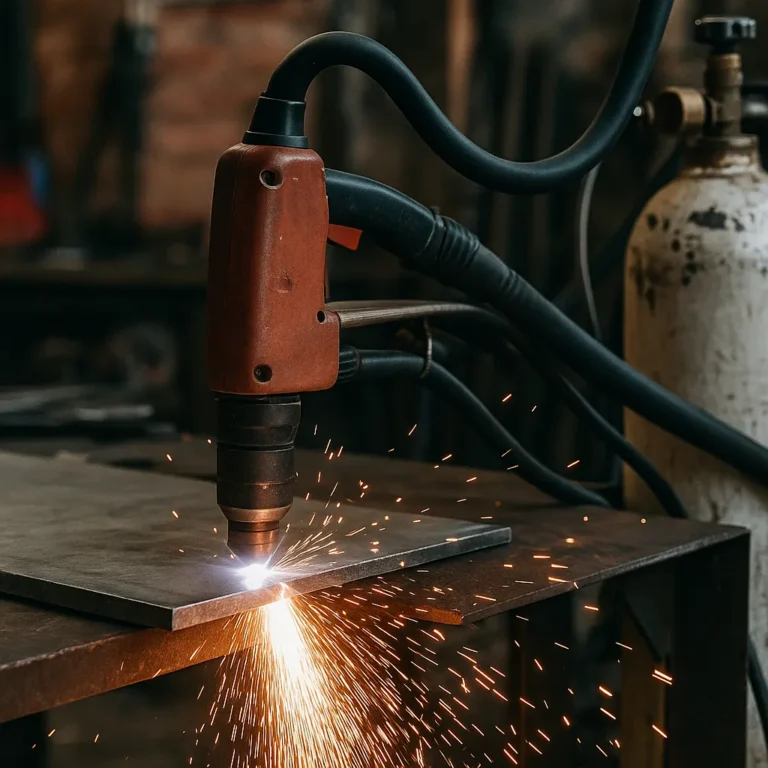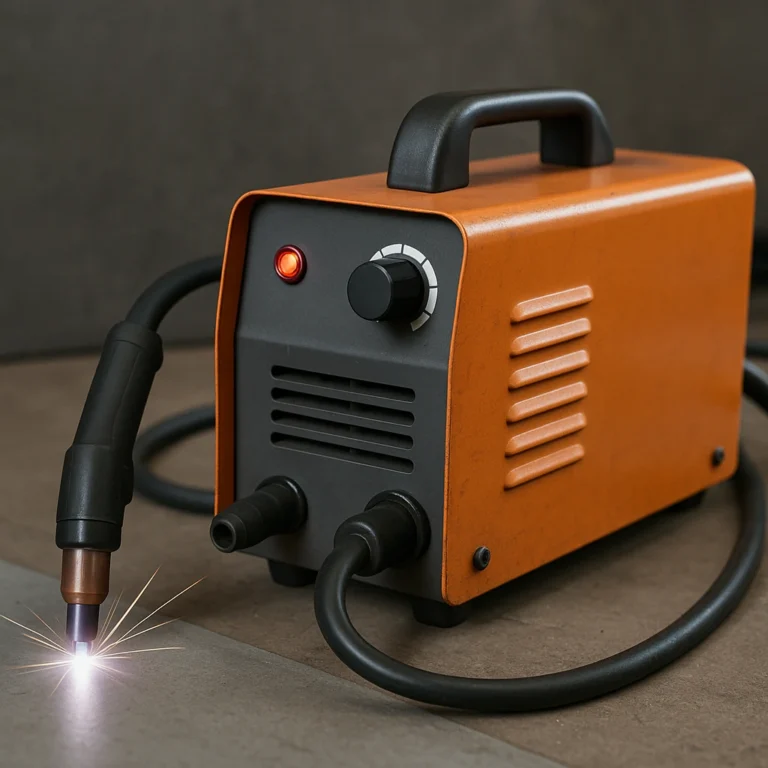Can You Cut Aluminum with a Plasma Cutter Like a Pro

Disclosure: This post contains affiliate links. As an Amazon Associate, I earn from qualifying purchases—at no extra cost to you.
Plasma cutters are a go-to tool for slicing through steel, but they’re also a solid choice for cutting aluminum—if you know what you’re doing. While aluminum can be trickier to work with, the right machine and technique can give you clean, accurate cuts without much hassle.
Whether you’re working on a DIY project, doing auto body repairs, or fabricating lightweight parts in a small shop, plasma cutting aluminum is totally within reach. Let’s walk through how it works and what to watch out for.
Aluminum Cuts Well—But It Handles Differently
Aluminum’s lower melting point and lack of surface oxidation make it behave differently than steel under a plasma arc. You might notice more dross, warping, or inconsistent edges if your settings aren’t spot on.
Community feedback suggests that thinner aluminum is prone to heat distortion, especially if you’re moving too slowly. For thicker material, you’ll want to reduce travel speed and ensure you’re using clean, dry air.
A test cut on scrap aluminum is always a good move. It helps you get your travel speed right and avoid surprises on the actual workpiece.
The Right Setup Makes All the Difference
Most plasma cutters rated for 30–50 amps can handle aluminum just fine. Dual-voltage units are especially handy if you’re moving between different power sources.
Machines with pilot arc tech are often recommended. They make striking the arc easier and help maintain it across painted or uneven surfaces. This is a big plus when working with used or recycled aluminum stock.
Good airflow is essential. Use a reliable air compressor and regularly check your filters. Cheap or worn consumables can also affect cut quality—so stick with high-quality tips and electrodes whenever possible.
There’s a Learning Curve—But It’s Manageable
Aluminum doesn’t offer the same margin of error as mild steel. The arc reacts faster, the metal melts quicker, and cleanup can be a bit more involved. That said, most users say it doesn’t take long to get the hang of it.
Using a torch guide or a straightedge makes a big difference, especially for beginners. If you’re running a CNC table, fine-tuning the amperage and air settings will help you get those crisp cuts on detailed shapes.
Machines like those from LOTOS or PrimeWeld—known for steady arc control and responsive adjustments—often come up in forum discussions as solid picks for cutting aluminum.
Safety Tips and Compatibility Notes
While aluminum isn’t as toxic to cut as galvanized steel, it still releases fine dust and fumes. Make sure your workspace has proper airflow. A respirator isn’t a bad idea, especially if you’re cutting indoors or for long periods.
Also, be mindful of your surroundings. Plasma cutters throw sparks, and aluminum dust can ignite under the right conditions. Keep your area clean and grounded, and double-check for flammable materials nearby.
Most standard plasma cutters can handle aluminum, but the quality of your results depends on how well you’ve dialed in your setup. Clean air, sharp consumables, and a smooth torch motion go a long way.
Conclusion
You can absolutely cut aluminum with a plasma cutter—it just takes a bit of practice and the right approach. With clean air, steady hands, and quality consumables, you can get smooth cuts on aluminum sheets, panels, and structural pieces.
It’s not quite as forgiving as cutting steel, but once you get a feel for the pace and behavior of the arc, it becomes second nature. Whether you’re fabricating in your garage or working on lightweight welding projects, a plasma cutter is a practical tool to have in your setup.






